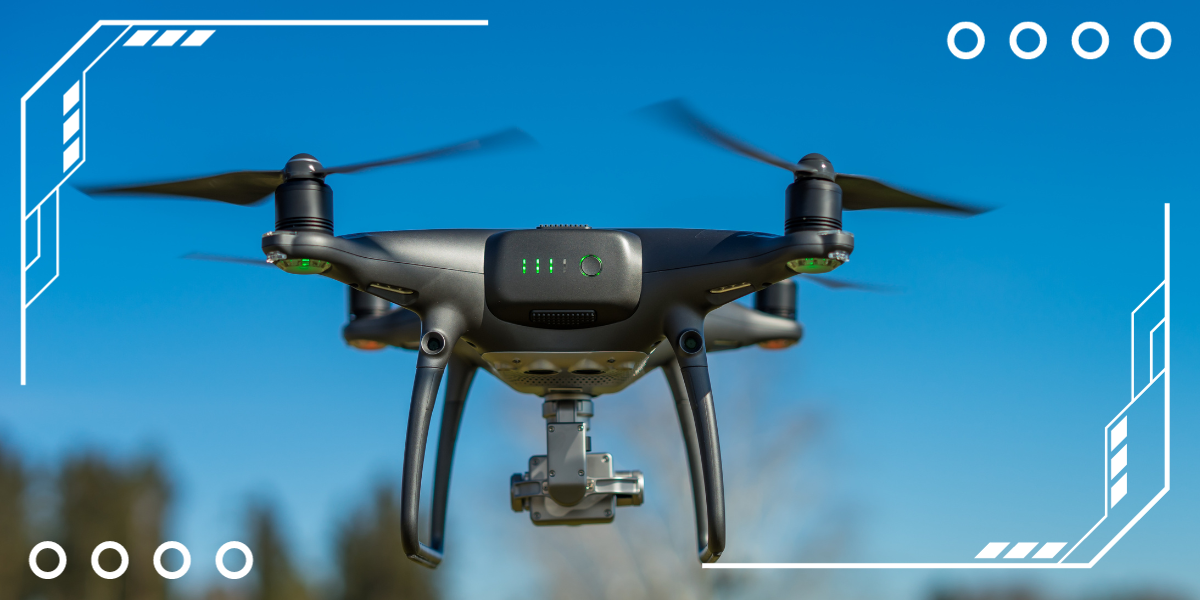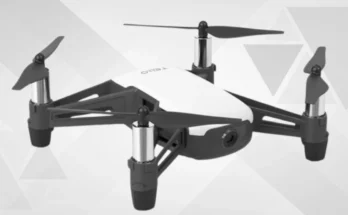Introduction: how fast can a Drone Fly
So, you’re curious about the How Fast Can a Drone Fly? Let’s dive in! Drones are more than just futuristic-looking gadgets; they’re also swift. With technological advancements, some commercial drones can reach staggering speeds of up to 160 kilometers per hour! Imagine a tiny flying machine zipping through the sky at breakneck speeds. It’s no wonder why drone racing has become a popular sport, with enthusiasts pushing these machines to their limits in thrilling competitions.
But it’s about more than just the need for speed regarding drones. Their velocity plays a crucial role in various industries and applications. From aerial videography to search and rescue missions, the ability of drones to cover ground quickly is revolutionizing how we approach tasks that were once deemed impossible or time-consuming. As technology continues to evolve, who knows what new speed records and possibilities we’ll see emerge from the world of drone innovation?
History of Drone Speed Development
One thing that you might need to be aware of is that even with all the innovations humanity has made, it still took years before drones could attain such high speeds. Models used during the first stages were slow and could hardly move at about 10 miles per hour. Nevertheless, with technological advancement came faster drone speeds. During the said year, DRL RacerX has already clocked an incredible 163.5 mph drone speed record that has initiated the era of super-fast aerial abilities for drones.
However, it provides an exciting prospect regarding the aerodynamic performance and material used for pushing the speed barrier. In that regard “How Fast Can a Drone Fly”, engineers have been developing thinner designs, using lighter but stronger metals not to sacrifice the safety of the boats at maximal speed. In addition, developments in battery power storage have made it possible for drones to fly faster over longer flights than was earlier possible.
Nevertheless, the search for faster drones continues unabated, albeit professionals and amateurs alike will eagerly await new record drone speeds surpassing current ones. As technology continues to evolve at breakneck speed, there’s no telling just how fast drones will be able to fly shortly – but one thing is sure: it’s going to be exhilarating!
Factors Affecting Maximum Drone Speed
The maximum speed for a drone involves many elements. The first thing is that the kind of motor and propeller determine how quickly a drone can travel. More powerful engines and efficient propellers can dramatically increase a drone’s top speed. The drone’s weight also plays a crucial role in determining its maximum speed. Heavier drones may struggle to reach higher rates due to increased air resistance and inertia.
Furthermore, the design and aerodynamics of the drone are essential considerations. Sleek, aerodynamic designs with minimal drag can help maximize a drone’s speed potential. Wind conditions affect a drone’s maximum speed; strong headwinds can hinder forward movement, while tailwinds can boost propulsion. Lastly, battery capacity directly impacts how long a drone can sustain its highest speeds for extended periods.
In conclusion, achieving maximum speed in drones involves considering factors such as motor power, propeller efficiency, weight, design, wind conditions, and battery capacity. Understanding these variables is essential for enthusiasts looking for high-speed performance and professionals seeking optimal efficiency in their aerial operations.
Fastest Commercially Available Drones
Commercial drones, on the other hand, continue moving forward as far as speed in the air is concerned. Nowadays, these wonders can achieve rates that would make one’s head spin when thought about only recently. The DJI Matrice 200 Series drone remains the fastest commercially available drone; such a unique UAV speed benefits search and rescue activities, surveillance, and quick-reaction missions.
However, no one should ignore the Autel Robotics EVO II, which has a maximum speed of 45 miles per hour! Being a commercially viable drone, this high-speed drone provides excellent features and capabilities typically unavailable in a similar-priced machine. These unmatched rates will see users getting tasks not previously achievable with today’s commercially available drones.
Military and Custom-Built High-Speed Drones -How Fast Can a Drone Fly
In addition, military and custom-built high-speed drones take aerial capacity to new heights with incredible speeds previously thought impossible. These drones operate faster than 400 miles per hour, outdoing traditional aircraft, resulting in an entirely different war approach. Such unmatched velocity makes military drones rapidly arrive at the destination points, gather information about the enemy’s camp, and monitor it.
With technological innovations, specialized, superfast drones are no longer just made for military purposes but are used in other fields nowadays. These quick drones can change airlifting medical supplies from remote places to keeping an eye on animals and crops farming. Pondering the possible future effects and transformations that may occur due to using such flying machines is intriguing.
Future Possibilities for Drone Speed –
how fast can a Drone Fly
Imagine a world where drones zip across the sky at unimaginable speeds, delivering packages and performing tasks with lightning-like efficiency. The future of drone speed holds limitless possibilities, opening new frontiers in emergency response, transportation, and entertainment. With advancements in propulsion systems and aerodynamics, we could soon see drones reaching speeds rivaling even the fastest-flying birds.
As researchers push the boundaries of drone technology, the dream of supersonic drones may become a reality. These high-speed marvels could revolutionize industries such as logistics and surveillance, enabling rapid delivery services and swift response to emergencies. Additionally, increased drone speed opens avenues for exhilarating new sports and entertainment experiences, ushering in a thrilling era of aerial races and breathtaking displays of agility.
With each leap in technological innovation propelling us closer to this future reality, it’s only a matter of time before we witness drones breaking speed barriers previously thought unattainable. As we eagerly await these exciting developments, one can’t help but wonder how far these sleek machines will soar into the horizon. The future is filled with endless opportunities for drone speed – an evolution that promises to shape our world in ways we’ve yet to grasp fully.
Conclusion: The Evolution and Potential of Drone Speed
So, as we conclude our exploration of how fast can a Drone Fly, it’s clear that the evolution of this technology holds endless potential. The world record for the fastest drone is a mind-blowing 163 mph, but there’s no doubt that engineers and innovators are already working on pushing this boundary further. With advancements in materials, propulsion systems, and aerodynamics, we may soon see drones reaching once unimaginable speeds.
But speed isn’t just about thrill-seeking or breaking records – it also has real-world applications. From efficient delivery services to rapid emergency response, the ability to fly faster can revolutionize various industries. As we look towards the future, it will be fascinating to witness how the evolving capabilities of drones continue to shape our world in ways we never thought possible. Who knows what incredible feats these flying machines will achieve next?
FAQs
-
What is the maximum speed of a drone?
Ans: Therefore, how fast can a drone move? So what is the answer? It might shock you! With speeds between 30 to 50 mph, consumer-grade drones have become one of the latest developments in military technology. Nevertheless, specific racing drones can attain rates as high as one hundred miles per hour! This is because they are streamlined with mighty engines, making them fly as if nothing were in the way.
-
What is the top speed of a drone?
Ans: Regarding the question, how fast can a Drone Fly ? The answer may surprise you. Modern drone technology constantly surpasses our expectations, and some high-speed models can now hit over 180 miles per hour! They can easily outpace your typical car on city streets and the highway. It’s an exhilarating thought that these compact devices are capable of such rapid movement, proper?
However, the average speed for most consumer drones tends to hover around 35 to 50 mph. Why is this, considering their apparent potential for speed? Well, as fun as triple-digit speeds might seem, they come at the cost of decreased control and flight time. Manufacturers focus on balancing raw power with maneuverability and battery efficiency – they have to ensure that you’re not just purchasing a Ferrari-esque gadget that crashes after five minutes due to depleted energy sources or poor handling!
-
Can drones see in the dark?
Ans: Can drones see in the dark? Absolutely! It might sound like a plot point from a sci-fi movie, but modern drone technology has undoubtedly made this a reality.
Bolstered by thermal imaging and infrared cameras, some drones don’t just see in the dark – they redefine darkness entirely. A night impenetrable to human eyes suddenly becomes as bright as day through a drone’s lens.
Now add this night vision capability with how fast a drone can fly – typically clocking around 45-60 mph at peak performance – and we’re talking about potential game-changers across numerous industries, from law enforcement to wildlife research. Astounding.
As drone technology evolves further, who knows what new tricks these gadget birds will next have up their wings!





3 Comments on “How Fast Can a Drone Fly – Unlocking the Top 10 Speed Potential of Best Drones”